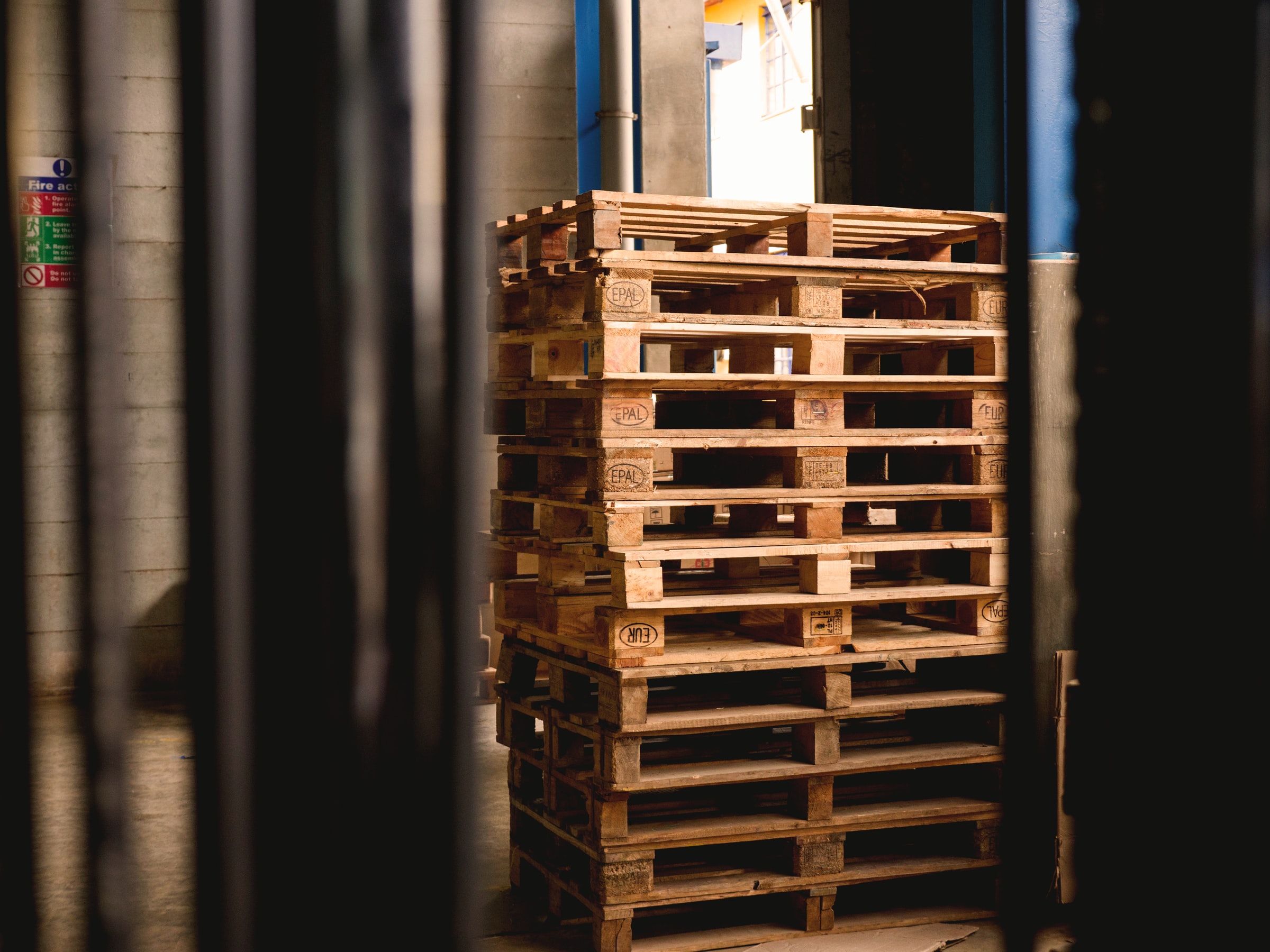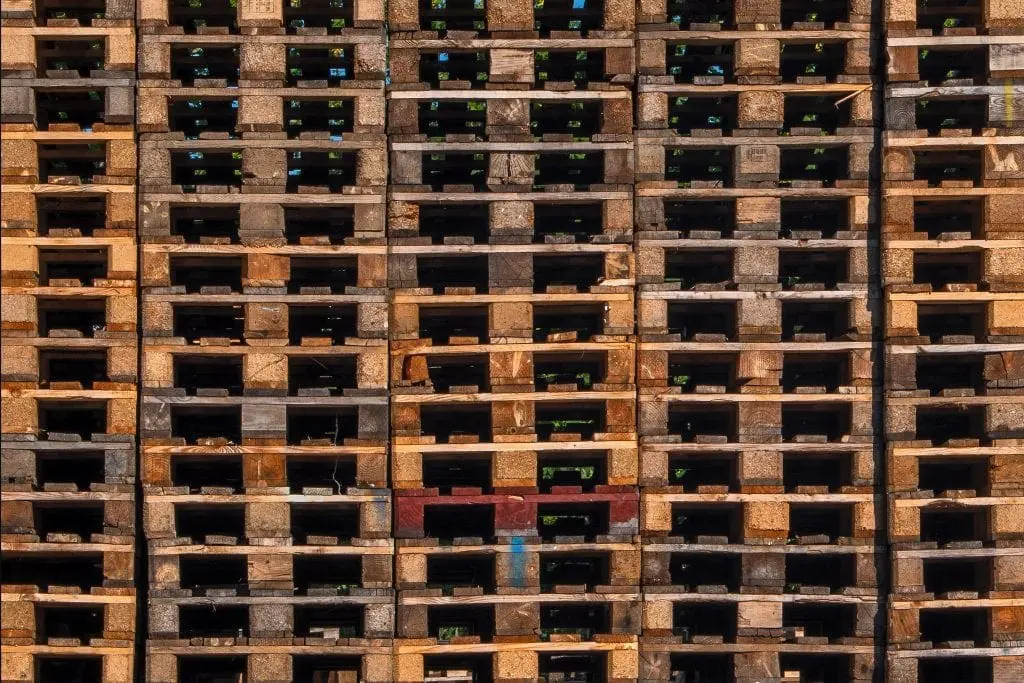How Are Wooden Pallets Made? | Pallet Manufacture and Transport

A pallet is a flat transport structure that is designed to support goods and provide stability when being lifted by a forklift, pallet jack, or other jacking device. Since its invention in the twentieth century, its use has dramatically supplanted older forms of crating like the wooden box and the wooden barrel, as it works well with modern packaging like cardboard boxes and Intermodal containers commonly used for bulk shipping. While most pallets are wooden, pallets can also be made of plastic, metal, paper, and recycled materials, so depending on what you need to ship and to where, bear this in mind! In this article we’re going to focus on the manufacture of wooden pallets, which have become the industry standard.
Ever wondered how wooden pallets are made? Below you will find the main processes that are used to manufacture wooden pallets.
Material selection
Wooden pallets tend to be made from core-based trees and consist of a combination of hard and soft woods. Many pallet producers won’t be able to tell you exactly what the composition of their pallets are, though they should be able to tell you what the constituent woods are.
The wood mixtures from which most pallet manufacturers build their pallets consist largely of two types of tree – oak and pine. It is, therefore, these two trees that count for the majority of the wood used in most wooden pallets today.
Oak is favored because it is a very strong wood that will grow just about anywhere. While strong and tough, oak is also common enough that it remains cheap and easily available in spite of its impressive strength and resilience. In fact, most years result in a surplus of oak produced for other purposes, such as construction or furniture, further helping to keep the cost of the raw material in wooden pallets as low as possible.
Pine is used in pallets because it is also widely available, and the addition of a soft wood to the wood mix leads to pallets with a more consistent weight than when using hardwoods alone. The goal is always to produce a pallet with a high strength to weight ratio – as strong and light as possible.
Another reason for including softwoods is because they are more resistant to fungus and bacteria than their hardwood counterparts, due to their faster drying time. If your pallets are going to be exposed to the elements for extended periods of time, you want to know that they won’t go moldy or deteriorate.
Cutting wood and Notching
The wood used to produce a wooden pallet is cut down to size at the local sawmill. Here, they are trimmed down to the appropriate length and cut into separate boards. An automatic saw cuts notches at the appropriate position to enable a forklift to pick up the pallet from any angle required. They are also usually designed to be lifted by pallet jacks, which are used to aid in the movement of heavy cargo. You may have seen these being used in supermarkets where you live.
The appropriate wood is selected and the pallet deck boards and stringers – the three or more parallel pieces of wood that cross them at right angles – are cut to size. The wood is usually softwood (coniferous trees), though engineered wood can be as hard and durable as some hardwoods. Notches may be cut in the stringers if four-way access to the pallet sides is required.
Treating and Nailing
Pure wood has to be treated under the ISPM15 international regulations to prevent the spread of pests and fungi. The wood must be heated to a minimum of 56 degrees celsius (over 30 minutes). The treatment kills pests and minimises the moisture content of the wood, making for lighter pallets. Engineered wood is exempt from ISPM15 as pests would have been destroyed by heating and gluing during the manufacturing process.
The wooden pallets are assembled according to specifications in an automatic process that can usually make up to 250 pallets each hour. Once the order is complete, it is shipped to the customer
Wooden pallets are widely popular across many industries for being a cost-effective solution that can be recycled, reused and easy repaired if broken. Wondering how a pallet distribution network works? Have a read here.


One Comment